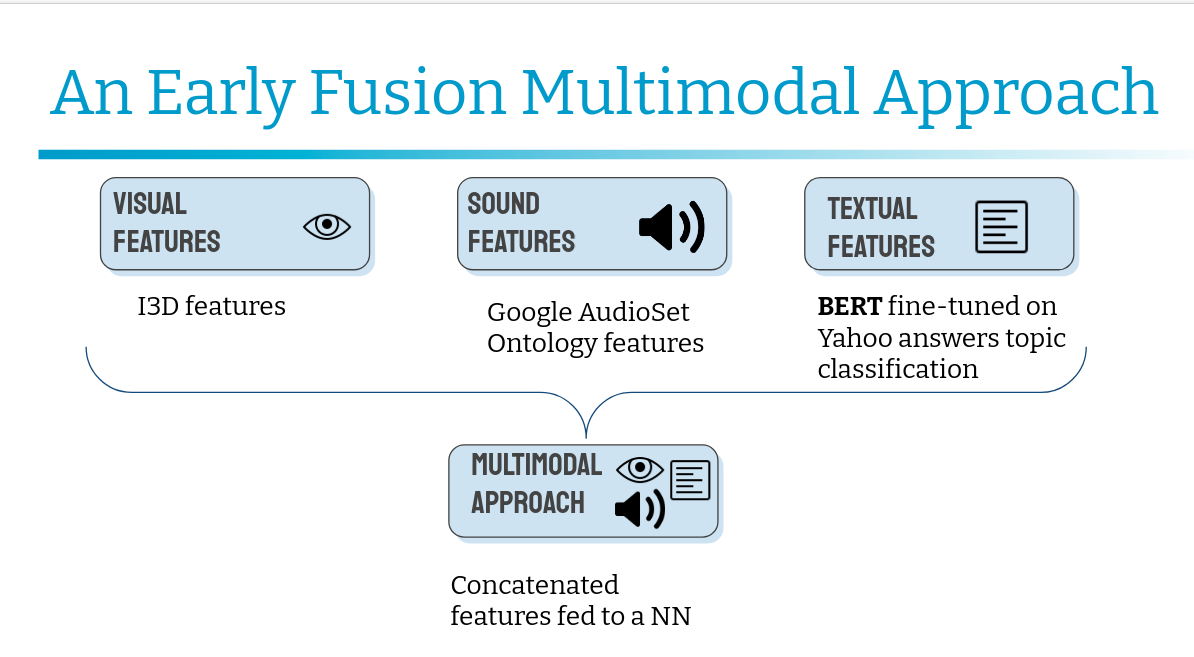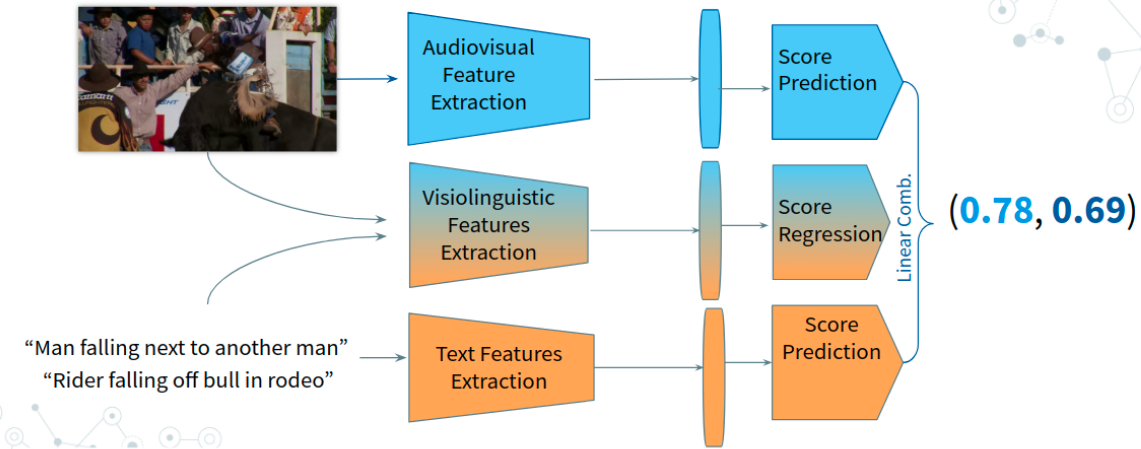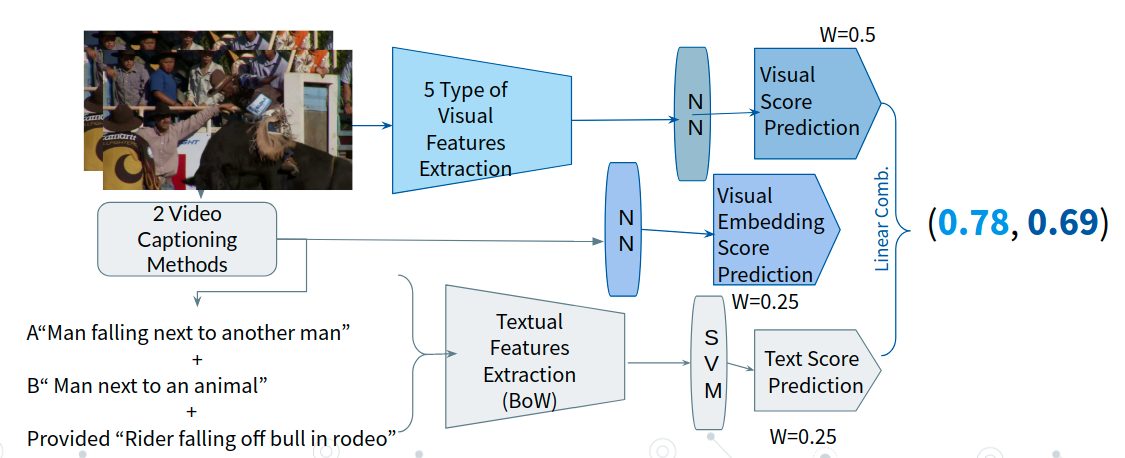- MediaEval Media Memorability 2019 Task | github
- MediaEval Media Memorability 2020 Task | github
- MediaEval Media Memorability 2021 Task | github
Please cite the following if you use this code.
@inproceedings{reboud2019combining,
title={Combining Textual and Visual Modeling for Predicting Media Memorability},
author={Reboud, Alison and Harrando, Ismail and Laaksonen, Jorma and Francis, Danny and Troncy, Rapha{\"e}l and Mantec{\'o}n, H{\'e}ctor Laria},
booktitle = {MediaEval 2019: Multimedia Benchmark Workshop},
year={2019},
address = {Sophia Antipolis, France}
}
@inproceedings{reboud2020predicting,
title={Predicting Media Memorability with Audio, Video, and Text representation},
author={Reboud, Alison and Harrando, Ismail and Laaksonen, Jorma and Troncy, Rapha{\"e}l and others},
booktitle={MediaEval 2020: Multimedia Benchmark Workshop},
year={2020}
}
@inproceedings{reboud2021exploring,
title={Exploring Multimodality, Perplexity and Explainability forMemorability Prediction},
author={Reboud, Alison and Harrando, Ismail and Laaksonen, Jorma and Troncy, Rapha{\"e}l and others},
booktitle={MediaEval 2021: Multimedia Benchmark Workshop},
year={2020}
}
For the 2021 edition we submitted different approaches.
The first one is a multimodal approach (vision,audio,text) with early fusion (the features are concatenated to produce a single prediction)

We also proposed an explainable text approach as well as an approach which relies on text perplexity measuring Presentation slides
Our approach for the 2020 edition is a weighted average method combining predictions made separately from visual, audio, textual and visiolinguisticrepresentations of videos. Two improvements from the 2019 approach are that we are now using the audio modality and focusing on video features (as opposed to image features ) allowing to better model action rich videos.
Our approach for the 2019 edition is a weighted average method combining predictions made separately from visual, visual embeddings and textual and representations of videos.
The approach consists in computing three different scores independently and later averaging them.
Read and follow textual_scores prediction's README.md
Extracting Vilbert features from the frozen task-agnostic Vilbert model, following the instructions in the README.mdunder
vilbert/vilbert-multi-task
Obtaining and computing the memorability scores using
python vilbert/mediaeval2020_pred.py
Read and follow PicSOM_prediction's README.md
Obtain the final score by running, combine_scores_2020.py, a code snippet for evaluating all linear combinations of values to combine different modalities.
python combine_scores_2020.py
For the 2019 edition, obtain the final scores runing
python combine_scores_2019.py
Note: All script finishing by _ns (not submitted) are experiments that werenot included in the final runs Not submitted: late_fusion_2021_ns.py SVR_ensemble_2021_ns.py is an additional experiment for late fusion ( for each modality and perplexity scores) with scores obtained with a SVM

